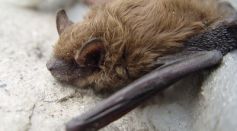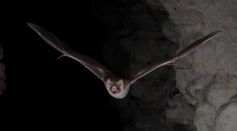Tags: Bats

First Case of Parasitic Soft Ticks Reported in New Jersey

COVID-19 Traced to Chinese Miners Back in 2012, According to a New Report

Scientists Trace Lineage of the COVID Virus in Bats
Earlier Studies Were Right: Coronavirus Came from a Hybrid of Bat and Pangolin Viruses, New Study Reveals
Chinese Woman 'Scared to Death' As 30 Bats Crawl on her Kitchen Window While Preparing Breakfast

Four Sister Species of the Bat That Caused COVID-19 Found in Africa
Six New Coronaviruses Are Discovered In Bats That Are In The Same Family With The SARS-CoV-2 That Caused The COVID-19
US Stops All Studies Involving Bats as It Cautions Against The Dangers of Possibly Triggering a New Wave Coronavirus Infection

Deadly Fungal Disease Causes Death of Millions of Bats in Texas

Sharing is Caring: Vampire Bats Regurgitates their Blood Meals and Shares them with their Neighbors
5 Scientific Things We Were Taught as Children That Simply Are Not True... Anymore
How Bats Evolved Diverse Skull Shapes Due to Echolocation and Diet
Citizens Could Benefit From Adjusting Streetlights For Bats
Echolocation: Tapping into Our Animalistic Senses
White-Nose Syndrome Killed Millions Of Bats: Mostly Affected Tri-Colored Bat Species
Even Prehistoric Cavemen Get Pestered By Bed Bugs: Discovered Human Bood Tastes Better Than Bats
Flying Foxes Headed Towards Extinction For Three Decades, Need Conservation ASAP
Bats In Texas Are In Danger Of Getting White-Nose Disease
‘Traffic Rules’ In Nature—Being a Little Batty
Bat-Like Bot May Soon Fly Its Way Into Space—The New Drone Frontier
Most Popular

Viruses vs Bacteria: Key Differences, How They Spread, and How We Treat Them

How Ice Cores Reveal Climate History: Insights from Paleoclimate Science and Ancient Data

Science-Backed Longevity Supplements: The Best Anti-Aging Vitamins for Powerful Healthy Aging Support

Carbon Footprint 101: What It Is and Simple Ways to Reduce Yours





